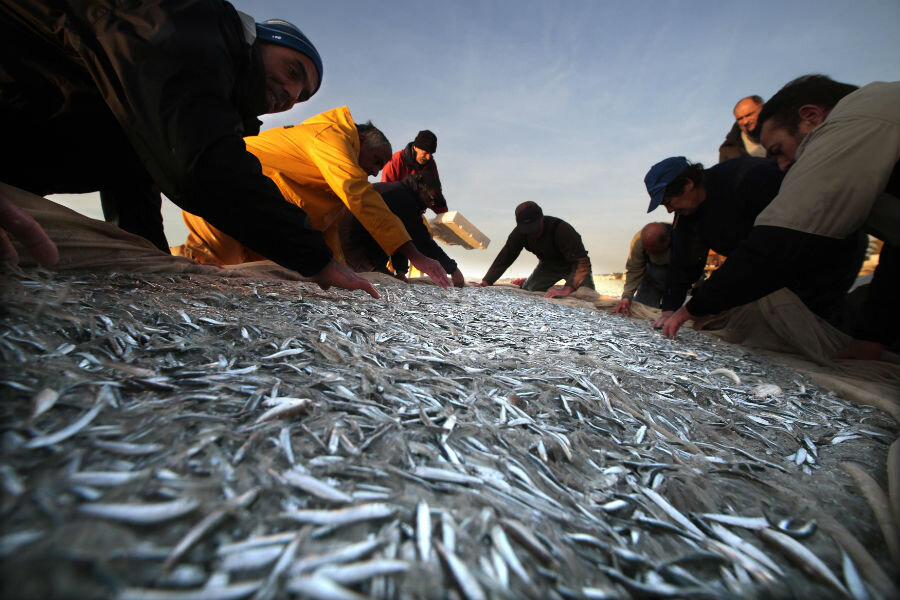Why did another venomous snake wash up on California's shore?
Loading...
A venomous, yellow-bellied sea snake was the latest marine creature to wash up in an unexpected place, thanks to El Niño.
During a beach cleanup event over the weekend on Bolsa Chica State Beach, around 30 miles south of Los Angeles, the tropical swimmer, with a bright yellow underside and a spotted, paddle-like tail, washed ashore dead. Live yellow-bellied snakes are unlikely to attack people unless people try to handle them, says the Surfrider Foundation, the nonprofit organization that found it.
The foundation called it “an amazing finding,” with only two others records of this species – which lives on the warmer coasts of Mexico, Africa, Asia, and Australia – found in California, one earlier this year and the other in 1972, also during an El Niño climate event.
"We were expecting this," Greg Pauly, assistant curator of herpetology at the Natural History Museum of Los Angeles County, told ABC News in October during the first instance this year that the snake was found in southern California, a region usually too cold for the creature.
"It's a rare event, but it was also somewhat predictable given that we are currently experiencing a fairly dramatic El Niño year," he said.
Experts believe that temperature changes associated with El Niño – a climate pattern that comes every two to five years and is caused by the warming of the Pacific Ocean around the equator – may have prompted the snake to swim north to more temperate waters that are conducive to the small fish and eels that the snake can paralyze with its venom.
The Northwest Fisheries Science Center in Oregon predicts that there could be more instances of marine species showing up in unexpected places along the West Coast.
“Previous El Niños coincided with large-scale redistribution of some West Coast marine mammals, fish and sea turtles,” explained the conservation organization online.
And the current El Niño is no different, particularly when combined with a “blob” of warm water in the Pacific Ocean about 1,000 miles off the West Coast, from Mexico to Alaska.
This big mass of warm water is partly responsible for the drought in the West and for the extreme snow last winter in the East. Some scientists believe that the blob was created because a high-pressure ridge above the Pacific Ocean over the past two winters caused calmer seas.
Without active waters that transfer heat to the cold air above, the ocean remained warmer than usual, some scientists believe.
The blob has already raised temperatures in the North Pacific about 5 to 7 degrees fahrenheit (3 to 4 degrees celsius) above average. Not since records began around the beginning of the 20th centurty have temperatures in the region been so warm for so long, according to NOAA.
Warmer oceans seem to benefit some creatures, such as sardines and albacore tuna, while harming cold-water fans, such as salmon.
Earlier this fall, NOAA spotted about 25 pilot whales off the central California coast. They were once common off southern California but largely disappeared after a strong El Niño pattern in the early 1980s. In the last few years these whales have reappeared, “a sign they may be starting to reoccupy former habitat,” says the fisheries science center.
But scientists are also studying whether the blob is responsible for a harmful algal bloom along the West Coast that may be a factor in an unusual number of whale deaths in Alaska.
"If we pay close attention to the animals, they're telling us something about changes in their environment,” said Dave Weller, a marine mammal researcher at the Southwest Fisheries Science Center in La Jolla, Calif.
“We now need to connect the puzzle pieces," he said.








